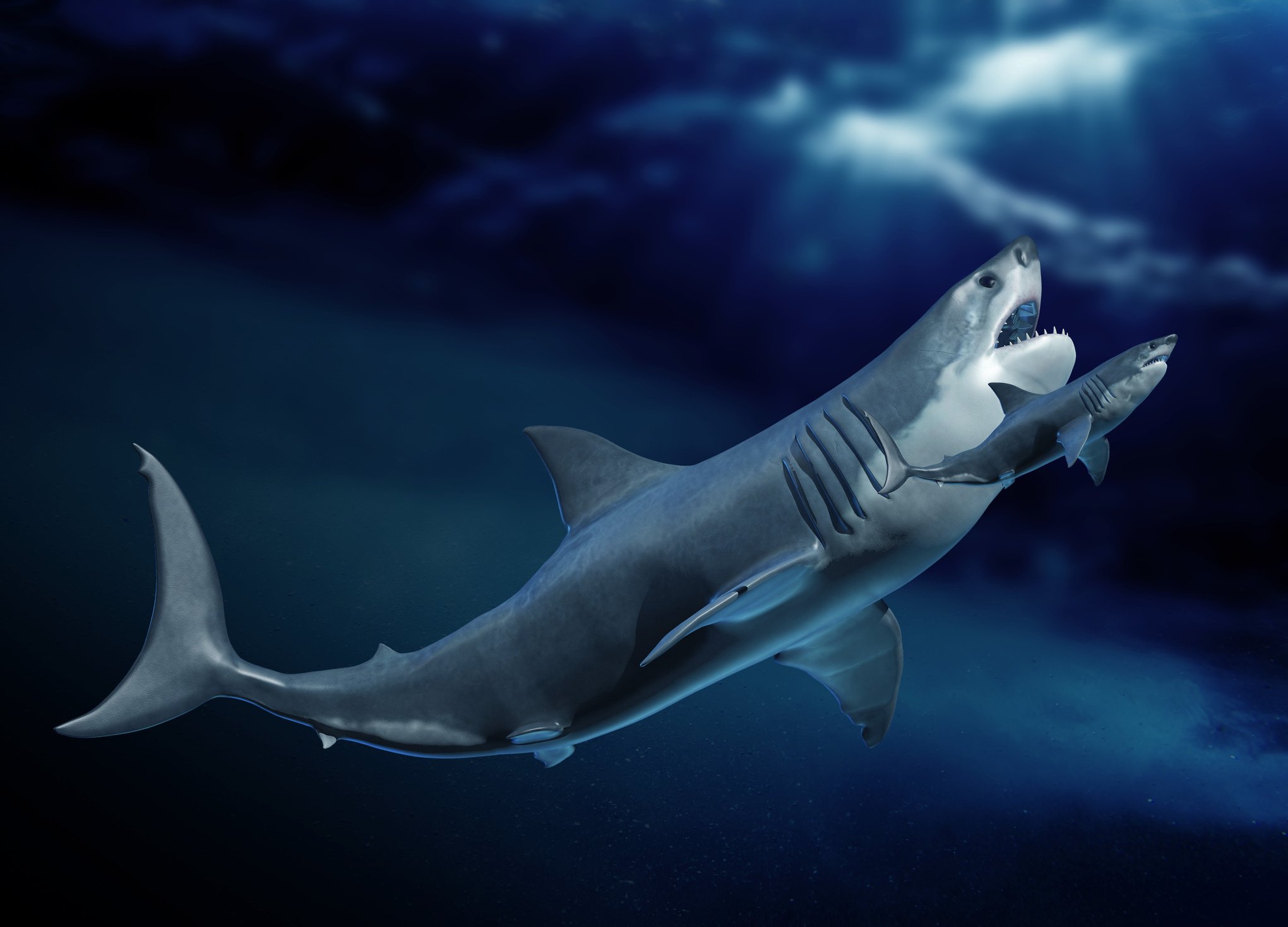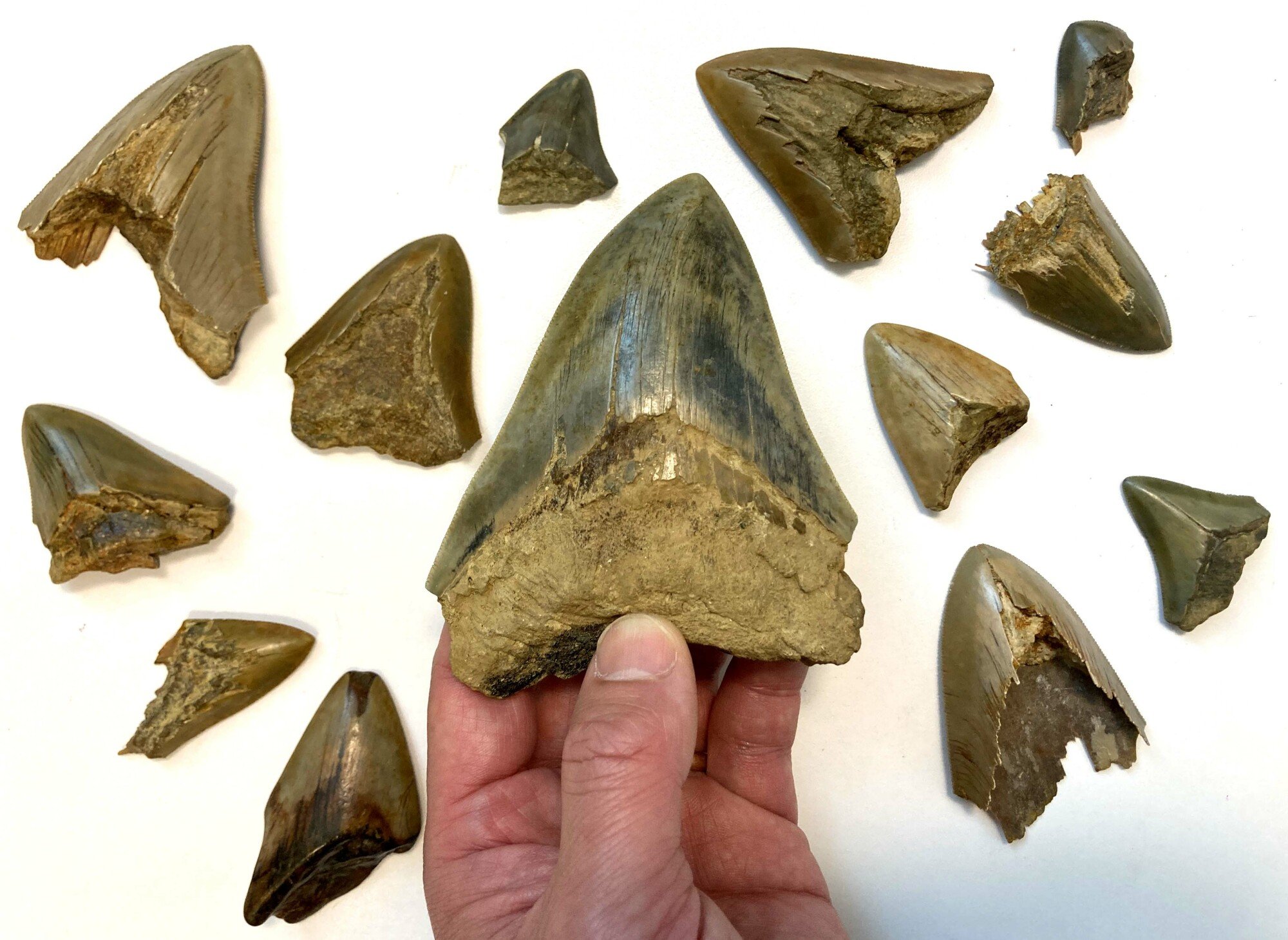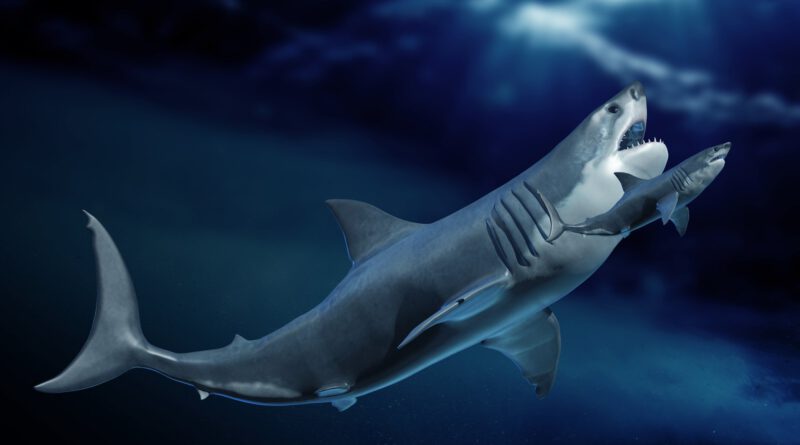There’s a fascinating new clue to the giant megalodon’s extinction

One of the most striking fossils around today are the teeth and reconstructed jaws of the megalodon.
The jaws of the extinct shark are so big, one or two people can stand inside them. They’re relics of a dominant predator that thrived some 20 million to 3.6 million years ago, a shark species that likely munched on whales and big fish. They grew around 50 feet long, which is bigger than a city bus.
What caused the demise of such a commanding creature is an ongoing investigation, but scientists have discovered a compelling clue. In research recently published in the science journal Nature Communications, earth scientists and biologists found preserved chemical evidence (in fossilized teeth) that megalodons and great white sharks coexisted as apex predators near the end of the megalodon’s reign, some 5.3 to 3.6 million years ago.
“They seem to have indeed occupied the same position in the food chain,” Kenshu Shimada, one of the study’s authors and a paleobiologist at DePaul University, told Mashable.
That means they were competitors for prey.
Previous research, like that published by paleontologist Robert Boessenecker, proposed that such competition was a driver of the megalodon’s extinction. This new research suggests the two species coexisted and ate the same food in the world’s oceans for 1 to 3 million years, Boessenecker, a research associate in the Department of Geology and Environmental Geosciences at the College of Charleston, told Mashable. Boessenecker was not involved in this latest study.
Ultimately, the megalodons were put at a disadvantage because they likely took longer to grow so large and reach sexual maturity, he said. The great whites would have reproduced faster and thus outcompeted the bigger, more energy-demanding megalodon. Importantly, many extinction stories aren’t simple. The changing climate could have been a factor, too, as global temperatures cooled during a period called the Pliocene, some 5.3 to 2.6 million years ago. Cooler oceans may have made life harder for megalodons. “As the adult sharks were dependent on tropical waters, the drop in ocean temperatures likely resulted in a significant loss of habitat,” explains the Natural History Museum in London. “It may also have resulted in the megalodon’s prey either going extinct or adapting to the cooler waters and moving to where the sharks could not follow.”
Many marine creatures, like mammals, turtles, sharks, and seabirds, went extinct during the Pliocene. Perhaps, then, great white sharks, who can subsist on fewer calories, were better suited to survive as top predators in a changing world.

The giant megalodon teeth
Fossilized megalodon teeth, which can be the size of a human hand, are scattered around the planet and commonly found. That’s because their jaws were lined with 276 teeth, and sharks lose (and replace) thousands and thousands of teeth during their lives. A good number of the megalodon’s hard teeth, then, were ultimately fossilized.
To determine what both great white sharks and megalodons ate millions of years ago, researchers analyzed the element zinc (specifically a zinc isotope, which is a type of zinc atom) in their respective fossilized teeth. Zinc is a valuable indicator because it’s an essential element for organisms, and the different types of zinc isotopes in animals’ teeth reveal animals’ different positions in the food chain, DePaul University’s Shimada explained. For example, bigger sharks that feed on marine mammals have different zinc compositions than smaller sharks that eat fish or plankton.

Ultimately, megalodons and great white sharks shared similar zinc compositions in the early Pliocene (some 5 million years ago), meaning they were likely competing for the same prey.
Want more science and tech news delivered straight to your inbox? Sign up for Mashable’s Light Speed newsletter today.
The story of the megalodon’s demise, however, is not nearly over. But now that researchers have shown — for the first time — that zinc isotopes are preserved in shark teeth for millions of years, scientists can reveal far more about the diets and lives of creatures who dwelled in Earth‘s ancient seas.
“The use of zinc isotopes for fossils could very well revolutionize how we study the food webs of extinct marine vertebrates, and I am very excited to see what comes next,” said Boessenecker.
This story has been updated with more information about the megalodon.


